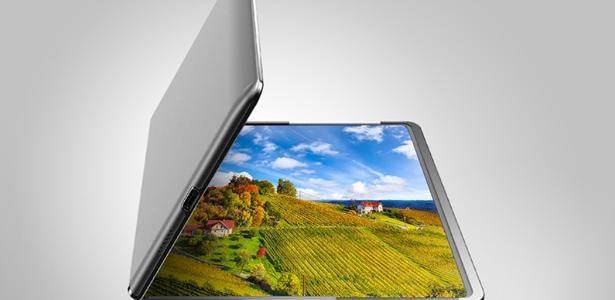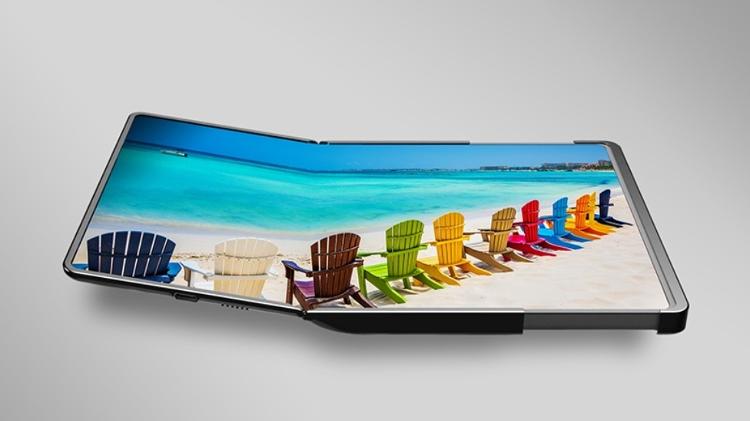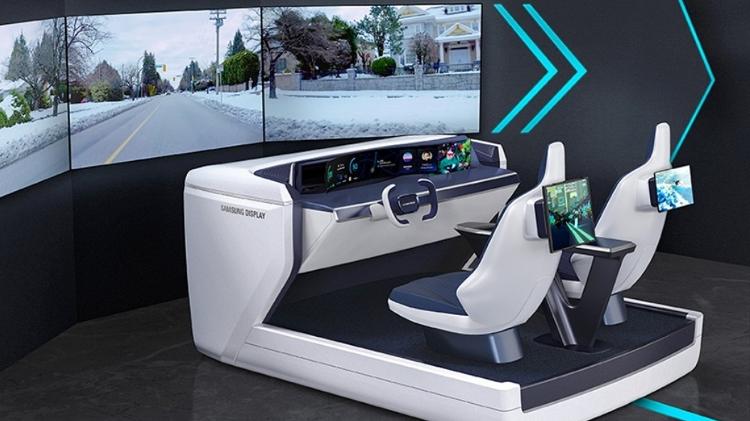Samsung is betting on foldable and sliding screens as a future trend for smart devices. Through its subsidiary, Samsung Display, the South Korean giant announced today (3) the development of a new panel that not only folds, but can also be increased or decreased by sliding.
The news was published on the eve of a special event at CES 2023, the world’s largest technology fair, fair Which will be held in Las Vegas, USA, this week.
How it works
The new screen is a tablet OLED Called the Flex Hybrid, it combines the ability to fold (something already present in other devices of the brand), with the ability to stretch in length, thanks to a sliding mechanism.
This technology should be implemented in devices such as smartphones, tablets, and laptops, in Samsung’s view.
According to the announcement, this feature is able to expand a 10.5-inch screen with a 4:3 aspect ratio into 12.4 inches, and change the aspect ratio to 16:10.
Another screen slides out
Another slide-out screen, capable of expanding from 13 to 17 inches, was announced last year. The brand will show it at CES 2023, in its first public appearance.
According to Samsung, the chip of this new screen model has two versions:
- “Flex Slideable Solo” which extends the screen in one direction only.
- “Flex Slidable Duet”, allowing it to expand in both directions.
The brand says this is for “multitasking purposes” like playing games or watching movies.
Televisions will also have large screens
Announcement Samsung The show includes other new technologies, such as “QD-OLED 2023”, aimed at television screens.
This is a novelty in combining quantum dots and OLED. As Mel explainedQled screen contains small dots between the LCD panel and the LED backlight.
OLED screens contain self-lighting pixels.
The QD-OLED display combines both an OLED backlight and a quantum dot layer, which improves contrast, color, and brightness.
It’s not new, having already been released in 2022, but the 2023 version promises to be more advanced.
In addition to expanding to a 77-inch TV (there are also smaller versions, 55, 65 and 34 inches), QD-OLED also has an artificial intelligence engine for picture optimization.
AI collects information about each pixel in real time and uses it to improve light control, according to the manufacturer.
In addition, it is expected to help save energy: the company claims that compared to the 2022 model, the new panel can reduce energy expenditure by up to 25% with the help of artificial intelligence.
cockpit screens
Finally, another novelty is the digital cockpit, the company’s first product for cars. The idea is to bring innovation to self-driving cars, which are expected to be more and more present in the reality of big cities. The cockpit combines a 34-inch screen with a 15.6-inch screen.
The large screen can be used to display movies and series while driving the car itself. As the company itself has already announced, the device is intended for premium cars.
It should be noted that many of the innovations presented at CES involve prototypes and do not reach the end consumer immediately.



